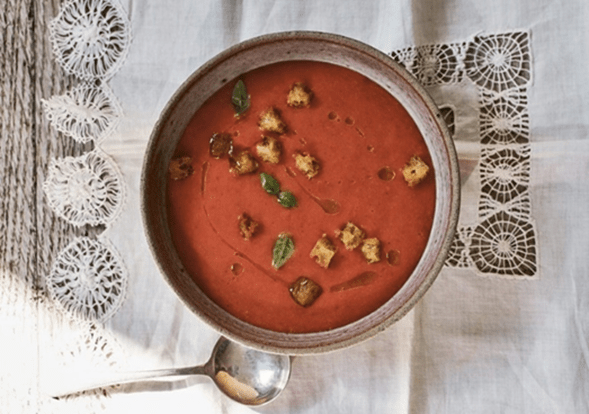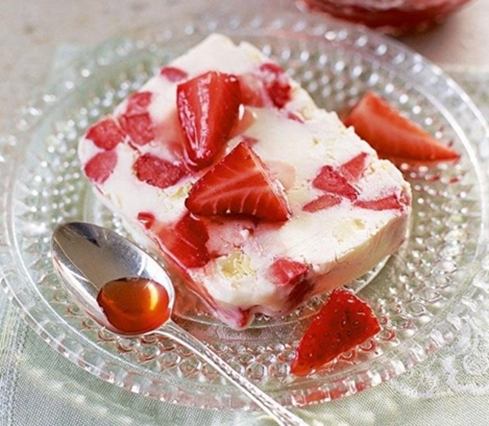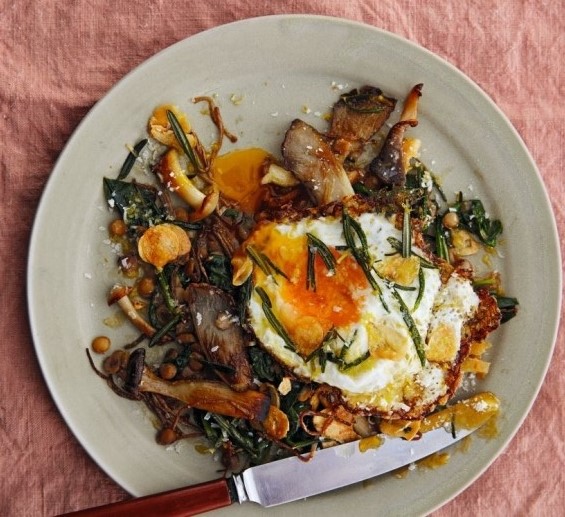The arrival of swallows and so many good things grown or reared locally! I love May with all its promise of Summer to come and everything fresh and newly green! It’s also the time for British asparagus and Jersey Royal potatoes. The potatoes have been grown on the island for 140 years and today there are approximately 20 island farmers who grow them (and often no other crops) on approximately 7,300 acres and can only be grown on Jersey to have the name. As for the asparagus, I am very lucky to live in the Valley of Evesham, one of the homes of British asparagus. I know you can buy this most of the year from abroad – but there is nothing like the Real Thing from just around the corner! This first recipe is using these two British stalwarts – but with a twist!
Coconut Potato Bowl with Lime and Ginger (I’m not giving you exact amounts here – just use how ever much you need to feed how many people!
- Jersey Royal potatoes, roughly chopped
- cauliflower florets
- Coconut oil, melted, enough to coat
- Sea salt and pepper
- asparagus
- olive oil
- cherry tomatoes, halved
- spring onion, sliced
- Baby broad beans
- Sliced cooked beetroot
- coconut flakes, toasted, to garnish
- Dressing: 2 tbsp olive oil finely grated zest and juice of a lime grated ginger
Preheat the oven to 200C/fan 180C/gas mark 6. Place the potatoes and cauliflower florets in a roasting tray, drizzle over the coconut oil and toss to coat. Sprinkle with sea salt and pepper and roast for 30 minutes until tender and beginning to brown. In the meantime, prepare everything else; brush the asparagus with some olive oil, heat a griddle pan until hot and cook the stems until charred and tender. Set aside. For the dressing, whisk together the olive oil and lime juice, then stir in the zest and ginger and season with some salt and pepper. To assemble, arrange the potatoes and cauliflower to one side and place the other ingredients round the bowl (or how you prefer), drizzle with the dressing and scatter over the coconut flakes, or serve on the side.

Crispy Oregano Jersey Royals with creamy feta sauce
- 250g Jersey Royals, halved or quartered if large
- 1/2 lemon, halved
- 1 cloves garlic, smashed
- 20g oregano, chopped
- 20ml, plus 60ml extra virgin olive oil
- Salt and pepper
- 40g mixed chopped herbs, basil, dill or parsley
- 1/2 tsp honey
- Sesame seeds
Feta Sauce
- 50g feta cheese
- 20g cream cheese, room temperature
- 1 tbsp lemon juice
- Pinch of smoked paprika
- Pinch of chili flakes
Preheat the oven to 220 degrees Celsius
On a baking sheet, toss the Jersey Royals, lemon wedges, garlic and oregano with 40ml olive oil. Season with salt and pepper. Roast for 20 minutes, or until tender. Remove the Jersey Royals from the oven. Remove the charred lemon and garlic from the baking sheet. Return the pan to the oven for 20-25 more minutes until crispy.
Herb oil, finely chop the roasted lemon wedges – rind and all. Chop/mash the garlic into a paste. Add the garlic and lemon to a bowl along with 30ml olive oil, mixed herbs and the honey. Season with salt, pepper and chili flakes
Feta sauce, combine the feta, cream cheese and lemon juice in a blender until creamy. If desired, thin with additional lemon juice.

Asparagus Soup – this will make more than for one – but I will allow you to batch cook and freeze on this occasion as the season is relatively short for British Asparagus!
- 25g butter
- a little vegetable oil
- 350g asparagus spears, stalks chopped, woody ends discarded, tips reserved
- 3 shallots, finely sliced
- 2 garlic cloves, crushed
- 2 large handfuls spinach
- 700ml vegetable stock (fresh if possible)
- olive oil, for drizzling (optional)
- rustic bread (preferably sourdough), to serve (optional)
Heat the butter and oil in a large saucepan until foaming. Fry the asparagus tips for a few mins to soften. Remove and set aside. Add the shallots, asparagus stalks and garlic, and cook for 5-10 mins until softened but still bright. Stir through the spinach, pour over the stock, bring to the boil, then blitz with a hand blender. Season generously and add hot water to loosen if needed. Ladle into bowls and scatter the asparagus tips over each. Drizzle with olive oil and serve with some nice crusty bread.
CRAB AND ASPARAGUS WITH THAI MAYONNAISE – again, the amount of asparagus and crab is up to you.
- Asparagus spears
- crab meat
- sliced sourdough bread
- olive oil
- handful of rocket leaves or spinach
- 2 – 4 tablespoons of good mayonnaise
- 1 garlic clove, peeled and crushed
- 1/2 – 1 red chilli
- freshly grated zest of 1lime
- 1 tablespoon fish sauce (if this is the first time you have used it please don’t be put off by the smell – it tastes much better!)
- chopped coriander
Cook the asparagus in boiling water for 2 – 4 minutes, drain and refresh under cold running water. Stir the garlic, chilli, zest, fish sauce and coriander into the mayonnaise. Season, if necessary, fold in the crab meat and set aside. Toast the bread, drizzle with olive oil and scatter over rocket or spinach leaves. Pile the crab mixture on top. Toss the cold asparagus spears in a little olive oil and arrange over the crab meat.
Alternatively, you could cook LOTS of asparagus and serve, on the side, hot with lashings butter – using any leftover toast to soak up the juices!
























